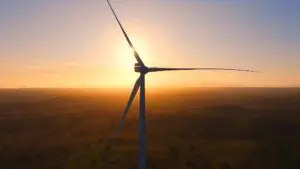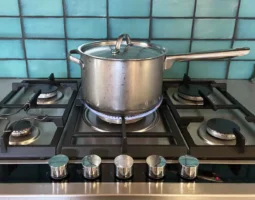US solar company SolarReserve has unveiled plans to build six large solar tower power plants with molten salt storage in South Australia to provide clean, dispatchable electricity to the state’s grid. But it has warned that none will happen unless it can get a contract and finance for the first plant near Port Augusta.
Kevin Smith, the CEO of the Santa Monica-based power company, unveiled the plans on Monday, meeting press, local councillors and the community in Port Augusta, before meetings with the state premier in Adelaide and federal politicians in Canberra later in the week.

SolarReserve says its six power plants will provide 660MW of reliable, dispatchable and zero emissions power – with a combined 880MWh of molten salt storage – that could account for one quarter of the state’s power needs, keep a lid on power prices because of the zero fuel cost, and provide 24,000 jobs during construction.
It says that its plants would provide as much reliable power as the current Heywood connector – and presumably any new ones being considered – and would be a more cost-effective option at scale than the battery storage alternatives being trialled by the likes of AGL Energy in a virtual power plant.
But Smith makes clear that without a power purchase agreement for 20 years – and assistance from the federal or state government in the form of grants or concessional finance – then it will be impossible to get the first project built.
“This is a relatively new technology, and the first of its kind in Australia,” Smith told RenewEconomy in a phone interview from Port Augusta on Monday. “We need to get to get manufacturing facilities in place to bring the costs down.
“So our key message is that governments (when choosing technologies) need to look at the entire picture – not just the price of power, but other benefits, such as jobs, zero emissions power, and the opportunity to roll out multiple projects.”
The solar tower plus storage plan has captured the imagination of the public, particularly in Port Augusta, and federal and state politicians on both sides talked effusively about the prospects for solar thermal in recent months. Some have been to visit the company’s 110MW facility which is operating in Nevada.
SolarReserve’s latest intervention comes as South Australia announces another tender to provide the state with 75 per cent of its electricity needs.
Controversially, the state appears to be favouring gas generators for the tender, announcing $24 million in assistance to develop new reserves, and allowing a 17-year-old gas generator that stopped producing electricity just 11 days before the closure of the last coal fired power generator to be considered as a “new plant.”
Smith says SolarReserve intends to bid into that tender, although it will need a longer contract than the 10 years that the state appears to be offering. Because of the up-front capital costs, it will be difficult to finance otherwise.

The six power stations that SolarReserve envisages are all located in the mid to far north of the state. They include Leigh Creek (where the Northern power station’s coal mine was located, and a competing coal-to-gas project), and Roxby Downs (where a solar PV plus battery storage project is also proposed).
The other proposed sites are at Whyalla and Woomera, as well as the Port Augusta project dubbed Aurora.
SolarReserve says the sites have been selected for their solar resources and their proximity to power lines.
The first project, called Crescent Dunes next to the desert town of Tonopah, provides power to Las Vegas between the hours of midday and midnight, but the facility can be calibrated to deliver power 24/7, or act as a peaking plant.
In fact, it can do whatever a gas-fired generator can do, says Smith, and it does not need or use gas as a back-up plant, as the state government appears to believe following misinformation from a rival technology company Solastor.
The Crescent Dunes plant was built with the help of a Department of Energy loan and a long term contract struck at $US135/MWh. It is soon to begin construction on a similar sized plant at Redstone in South Africa, with costs down around 20 per cent, and Smith expects costs to fall by around half from the original plant.
This fits in with the view of ACWA Power, which is helping build Redstone and other solar tower projects, and who predicts that solar tower with storage will beat 8c/kWh. SolarReserve has also signed an agreement with China coal giant Shenhua to build 10 such power stations in China.
But in any new market, the first plant is critical. This has been the experience of large scale solar PV in Australia, which is much more expensive here than in other countries because the supply systems are yet to be put in place. But a tender process conducted by ARENA has already been able to bring costs down by around 40 per cent.
Smith says SolarReserve would likely need either a grant from ARENA or finance from an institution such as the Clean Energy Innovation Fund to be able to offer a competitive price in the first project.
“Building this first project will provide South Australian companies, manufacturers, engineering firms, and lenders with the confidence to invest resources and capital in this new industry resulting in more competitively priced projects in the future,” Smith says.
“The technology is already proven and is an excellent fit for Australia’s rapidly evolving grid. As renewable energy penetration grows in Australia, the need for utility-scale renewable generation with storage technology will become increasingly important.”








